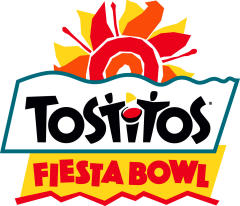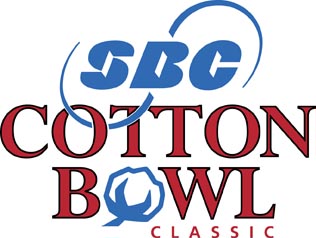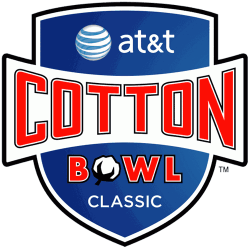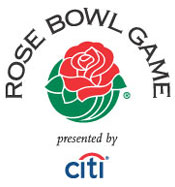Everything I Need to Know About Branding I Learned from College Football

Remember the adage everything I need to know I learned in kindergarten? Well let's think about this in terms of branding; that sentence could easily translate to everything I need to know about branding I learned from college football.
As I've written about in a number of past posts creating a memorable brand experience and creating a strong brand loyalty are the hallmarks of a successful brand, and nowhere will you find a company or product that creates the undying passion and loyalty the way college football teams do.
Point-in-case: When I originally started to write a post tying branding and college football together I was going to list the top ten college football brands (admittedly determined by my own biased ranking system) but quickly decided this was a bad idea based on a number of things.
- Problem #1: The thought of ranking my favorite team (Go Gators!) at anything other than #1 made my skin crawl.
Problem #2: SEC schools would undoubtedly take over the top five (heck the entire top ten would probably be SEC schools in my mind) because in addition to being a Florida fan I'm an SEC fan.
Problem #3: Last but certainly not least, I knew that if I started ranking college teams a debate so heated would break out in the office that I feared our walls would come crashing down like goal posts of yesteryear.
So how do college football teams garner such strong brand experiences and loyalty? It's because when it comes to branding, college football gets it. There is a painstaking attention to detail associated with a college football brand from making sure the correct Pantone color is used for every piece of equipment, apparel and brochure to guarantee consistency to nostalgic activities that create positive brand associations. These nostalgic activities can include a school's unique tailgating traditions and pre-game ceremonies. Every detail is considered, and everything is branded.
But why would a school spend so much time, energy, and money to create these branded experiences? It's simple. A school with a strong brand will continue to attract masses of new students each year (subsequently growing its brand's reach every year), students then graduate, become alumni and alumni become donors to the school. Finally there is the revenue and brand impressions generated from trademark licensing. Schools like the University of Texas, University of Florida, University of Michigan, University of North Carolina, etc. generate millions of dollars each year from licensing revenue alone. The number of impressions brands like these get each year from the sale of licensed apparel and equipment only furthers the awareness and loyalty for brands.
Having a strong brand in college football is more than winning games because even in recent slumps of some the greatest brands in college football their fans have remained true and passionate. It's all about the experience and the passion the fans feel for their brand…I mean team.
So repeat after me: everything I need to know about branding I learned from college football.
Branding Bowl Games: GMAC Bowl

......................................................................................................................................................................
What was once just a daydream has now developed into a game that fields some of the most competitive and exciting games of the bowl season. Stan Tiner, former editor of the Mobile Register, is the man who realized the possibilities of another Alabama Bowl, in addition to the already existing Senior Bowl. Since 1999, his idea quickly grew into the success it is today!
Mobilians recognized the importance of the bowl name, so many ideas were originally discussed. Such names included the Azalea Bowl, the Mardi Gras Bowl, and Jubilee Bowl. Eventually the Mobile Alabama Bowl was officially born. In 2000 the bowl received corporate sponsorship from GMAC Financial Services, hence the existing name, the GMAC Bowl.
With the addition of the GMAC Bowl, Mobile joined Miami as the only other city in the country to host two major college bowl games every year. The GMAC Bowl is repeatedly rated as one of the top 10 bowl games to watch. This year the GMAC match up will be Tulsa vs. Ball State on January 6th, so don’t miss out!
Branding Bowl Games: Fiesta Bowl

......................................................................................................................................................................
In 1968, Arizona State University President G. Homer Durham proposed that Phoenix should have a football bowl game. Thanks to the support of several local sports enthusiasts and community leaders, this dream was realized on April 26, 1971. Until this point, the Rose Bowl was the only other bowl game played outside of the South.
On June 10, 1971, the Arizona Sports Foundation and the Arizona Republic held a “Name the Bowl Game” contest. According to the Fiesta Bowl’s official website, 6,500 entries were received, 73 of which suggested the name “Fiesta Bowl”. In a blind drawing of the 73 winning entries, Gary Keltner was chosen as the lucky winner and received four lifetime tickets to the Fiesta Bowl Classic.
Although the name Fiesta might seem a bit abstract at first, I think it is rather appropriate for a bowl game. The dictionary definition of the word Fiesta, as defined by www.dictionary.com is “A festival or festive celebration.” What could be more festive than a football game? Football games not only engage the players and their fans, but also the larger community in which the game takes place. Football games, and more importantly, bowl games, are celebrated with food, friends and team spirit, truly embodying the definition of Fiesta.
By: Jessica McGrail
Branding Bowl Games: International Bowl

......................................................................................................................................................................
The 2009 International Bowl was played on January 3rd at Canada’s Rogers centre. This recent addition to college bowl games takes its name quite literally from the fact that it is the only post-season bowl game played outside of the United States.
In the first International Bowl in 2007, the NCAA pitted Western Michigan University against the University of Cincinnati. It was the first post-season bowl game played outside the United States since the Bacardi Bowl was played in Cuba in 1937.
This year's matchup included two winter warriors: the Connecticut Huskies vs. the Buffalo Bulls.
Contributed by: Maghan Cook
Branding Bowl Games: Liberty Bowl
On January 2, 2009, the University of Kentucky and East Carolina University will play in the 50th annual Liberty Bowl. Without knowing its history, it is quite puzzling why a bowel game played in Memphis, TN would be called the Liberty Bowl. However, the bowl game was first played in Philadelphia, PA before it landed in Memphis in the mid-1960s.
The Liberty Bowl name certainly plays off of Philadelphia’s heritage as it is the home of the Liberty Bell. Therefore, it is fitting that the trophy presented to the winner of this game is an authentic, one-quarter-sized replica of the bell that rang in Independence Hall to announce the signing of the Declaration of Independence. To check out the Liberty Bowl yourself, click here.
By: Rebecca Parker
Branding Bowl Games: Sugar Bowl

......................................................................................................................................................................
2009 marks the 75th anniversary of the Sugar Bowl, whose name originates from the history of Louisiana itself. Back in the 1920s, when the idea for the annual game was first discussed, Louisiana was the nation’s top sugar producer. According to an article from the New York Times (https://www.nytimes.com/2007/12/30/sports/ncaafootball/30sugar.html?fta=y), the “game’s original stadium was built on land where Étienne de Boré became the first person in La Louisiane to crystallize sugar into granules.”
The trophy for the first game, played by Tulane and Temple, was a replica of a silver wine cooler that was crafted in 1830 and donated by a French Quarter antiques dealer. Interesting that the members of the Mid-Winter Sports Association chose that symbol, rather than a connection to the refined sucrose we know and love today.
Branding Bowl Games: Cotton Bowl
On January 2, 2009, Ole Miss will take on Texas Tech in the 73rd AT&T Cotton Bowl Classic. According to Wikepedia, the Cotton bowl first was played in 1937 in Dallas, Texas. However, the name has gone through several changes due to sponsorship over the years as seen in the evolution of the logos below.





Also, the Cotton Bowl will be moving in 2010 to the new Cowboys stadium in Arlington. If you’re interested in finding out more information about the Cotton Bowl, click here.
By: Trista Thielker
Branding Bowl Games: Orange Bowl
The FedEx Orange Bowl, played on New Year’s Day, is the second oldest college bowl game. It was created in hopes of drawing tourists back to Miami after the 1926 hurricane and the 1929 stock market crash.
The name seems like an obvious choice, as Florida is the largest producer of oranges in the U.S., but it took almost a decade for the name we know to develop. The game was first played in 1926 as part of the "The Fiesta of the American Tropics". A few years later, the Greater Miami Athletic Association organized the game under the name Palm Festival, with the slogan “Have a Green Christmas in Miami”. In 1935, the chairman of the Greater Miami Athletic Club and a local radio announcer came up with the name "Orange Bowl". FedEx became the game’s sponsor 1989.
The success of the game led to the construction of the Orange Bowl Stadium as a WPA project. The stadium was originally named Burdine Stadium, after a local businessman who owned a department store. The game moved to Miami’s Dolphin Stadium in 1996.
Branding Bowl Games: Rose Bowl

......................................................................................................................................................................
Let me introduce you to “The Granddaddy of Them All”...the Rose Bowl Game. This annual American college football bowl game achieved its nickname by being the first post season game, dating back to 1902! It starts things off right on New Year’s Day in Pasadena California, and since 1945, has been the highest attended college football game!
Don’t be fooled though! This legacy goes far beyond an annual football game. The first tournament was actually staged in 1890 when a local group decided to hold a festival to tell the world about their paradise of blooming flowers and warm weather. The Festival included such amazing games as ostrich races, chariot races, and bronco busting demonstrations.
What eventually developed into the Tournament of Roses, also known as “America’s New Year Celebration,” is famous for an amazing parade that consists of floats now featuring high-tech computerized animation and exotic natural materials from around the world.
This year the Rose Bowl Game will be Penn State vs. USC, so make sure you check out who wins the granddaddy of all games! Learn more here.
Contributed by: Ashley Hollingsworth
Branding Bowl Games: Gator Bowl
The Gator Bowl, formally named Konica Minolta Gator Bowl after its present sponsor, is the sixth oldest college bowl game and was first played in 1946 between Wake Forest and South Carolina. It was in 1955 when the Gator Bowl became the first ever to be nationally televised coast-to-coast. Over the years the sponsorships, much like others bowls, have switched hands several times. Other Gator sponsorships have included Toyota, Outback, and Mazda.
I found out a great deal of information about the Gator Bowl’s history but nothing about how the actual “Gator” name came to be. Of course, we can’t forget about the University of Florida who named its mascot the “Gator” in 1911, long before the Gator Bowl came into existence. I think we can safely assume the name came from the region’s historical and continually growing alligator population.
By: Kelly Wilson
